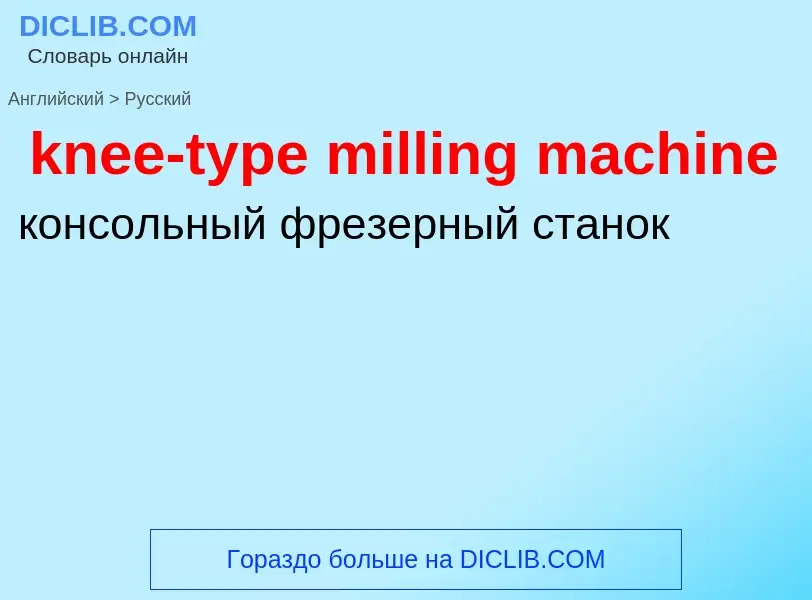Enter a word or phrase in any language 👆
Language:
Translation and analysis of words by ChatGPT artificial intelligence
On this page you can get a detailed analysis of a word or phrase, produced by the best artificial intelligence technology to date:
- how the word is used
- frequency of use
- it is used more often in oral or written speech
- word translation options
- usage examples (several phrases with translation)
- etymology
knee-type milling machine - translation to russian
HEAVY MACHINE GUN
Type 97 machine gun; Type 97 machine guns; Type 97 Light Machine Gun; Type 97 light machine gun
knee-type milling machine
консольный фрезерный станок
machining center
MACHINING PROCESS
Milling machine; Milling machines; Machining center; Milling center; Universal milling machine; Horizontal milling center; Gang milling; Gang milling operation; Lincoln miller; Lincoln Miller; CNC pocket milling
общая лексика
обрабатывающий центр
milling machine
MACHINING PROCESS
Milling machine; Milling machines; Machining center; Milling center; Universal milling machine; Horizontal milling center; Gang milling; Gang milling operation; Lincoln miller; Lincoln Miller; CNC pocket milling
milling machine фрезерный станок
Definition
ПУЛЕМЕТ
автоматическое оружие для поражения наземных, воздушных и морских целей. Изобретен в 80-х гг. 19 в. Различают пулеметы ручные (с сошкой), станковые (на треноге или колесах), единые, используемые в обоих вариантах, и крупнокалиберные; по назначению - пехотные, зенитные, авиационные, танковые и др. По калибру пулеметы делятся на пулеметы малого (до 6,5 мм), нормального (от 6,5 до 9 мм) и крупного (от 9 до 14,5 мм) калибра.
Wikipedia
Type 97 heavy tank machine gun
The Type 97 heavy tank machine gun (九七式車載重機関銃, Kyū-nana-shiki shasai jū-kikanjū) was the standard machine gun used in tanks and armored vehicles of the Imperial Japanese Army during World War II, a heavy machine gun by infantry forces, This weapon was not related to the Type 97 aircraft machine gun used in several Japanese Navy aircraft including the Mitsubushi A6M Zero, or the Type 97 automatic cannon used as an anti-tank rifle.






![Pratt & Whitney]], probably 1870s or 1880s.) Pratt & Whitney]], probably 1870s or 1880s.)](https://commons.wikimedia.org/wiki/Special:FilePath/Lincoln miller--a typical example--P and W--001.png?width=200)









